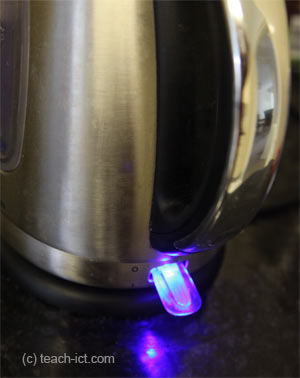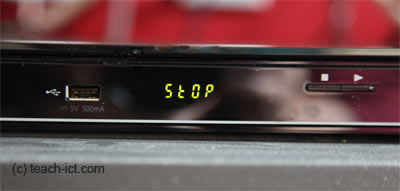12. LEDs
A Light Emitting Diode or LED lights up in a pure, bright colour when it is switched on. Typically green, red or blue. (This ignores the use of LED as just bulbs)
 LEDs are commonly integrated into many household appliances in order to provide you with information. This information is often to tell you whether an appliance is switched on or off, for example:
LEDs are commonly integrated into many household appliances in order to provide you with information. This information is often to tell you whether an appliance is switched on or off, for example:
- televisions
- computers and monitors
- answer phones
- kettles
- clock radio alarms
They can also be used to indicate that something else has happened, for example:
- pressing the 'caps lock' button on your keyboard will light up the caps lock led
- flashing light on answer phone will indicate that a message has been received
- flashing light on burglar system to indicate that the system is active
LED Displays
LEDs can also be combined to form a visual display. Such as the one on the DVD player below. 7 LED segments are combined to make up a single text character, such as the 'S' in 'Stop' (some segments are off to form the S). Each group of LEDs can then be lined up to form words and sentences.

Much larger displays are manufactured that are intended to provide information in public areas.
Examples of the use of LED displays include
- Airport gate and flight information
- Railway stations
- Bus stations
- On board buses to show route name etc
- Motorways
- Local bank, bank teller is free
challenge see if you can find out one extra fact on this topic that we haven't already told you
Click on this link: LED Warnings
challenge see if you can find out one extra fact on this topic that we haven't already told you
Click on this link: LED Information System
